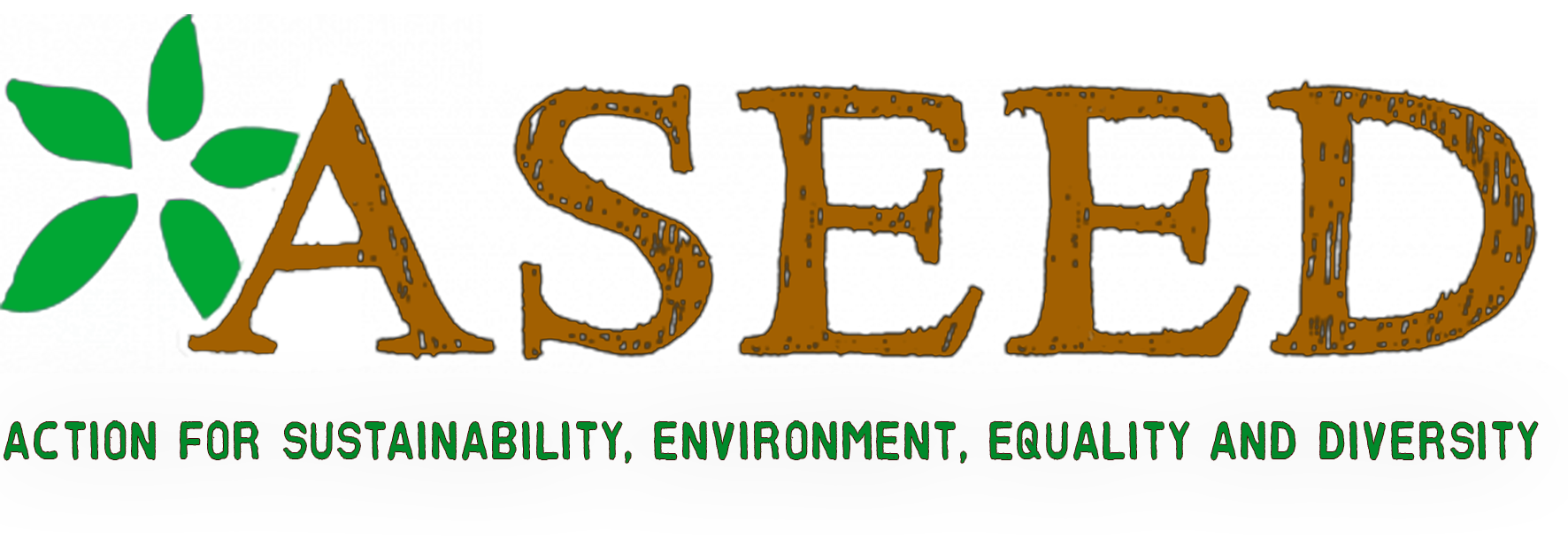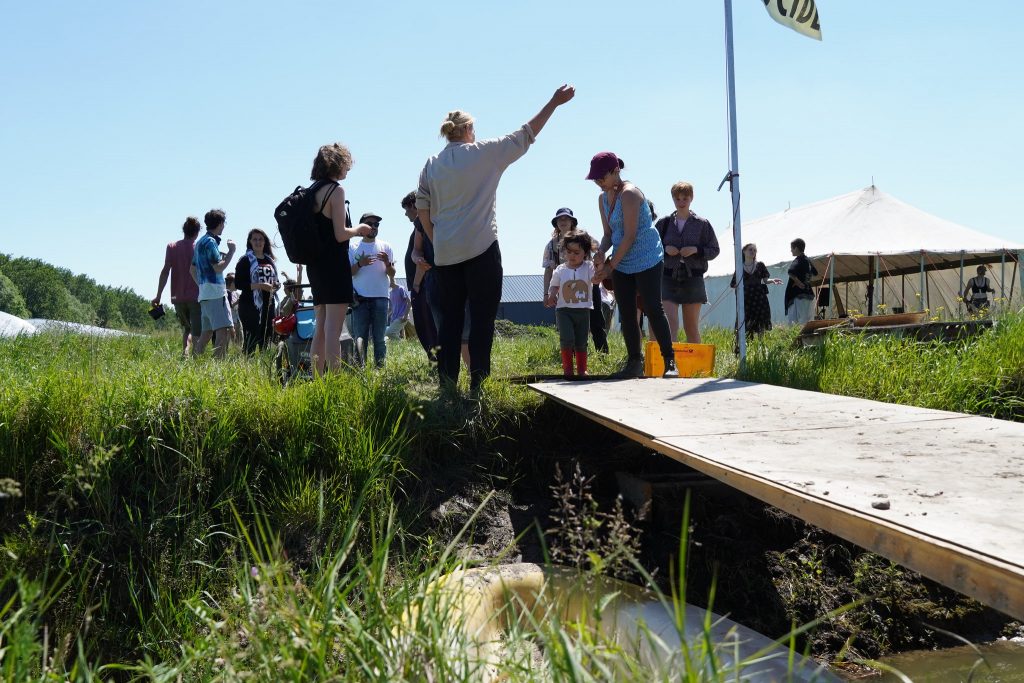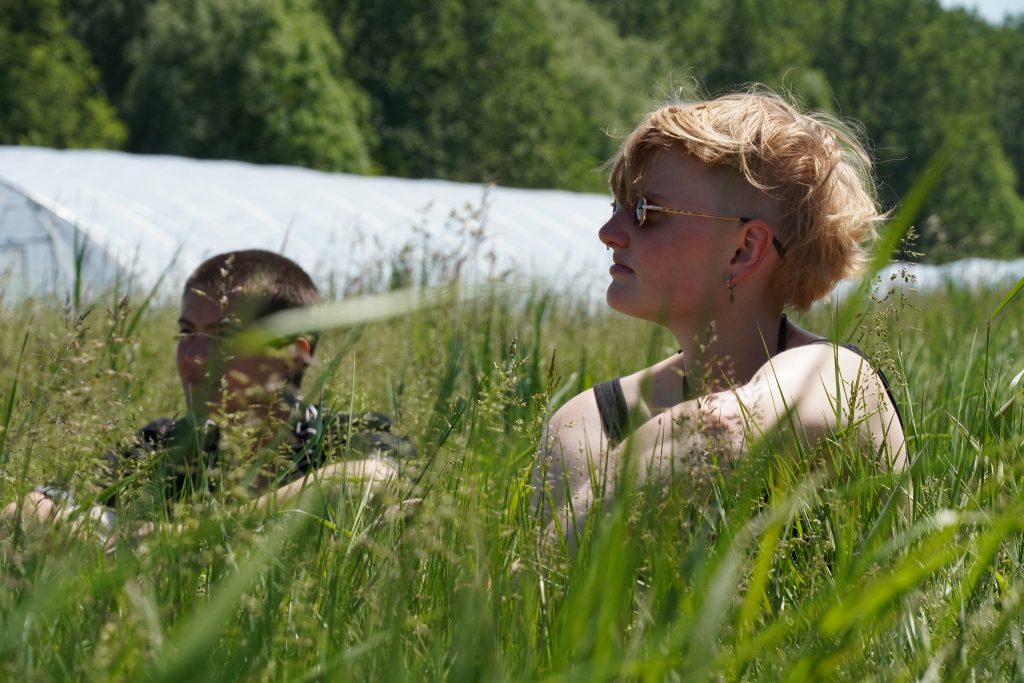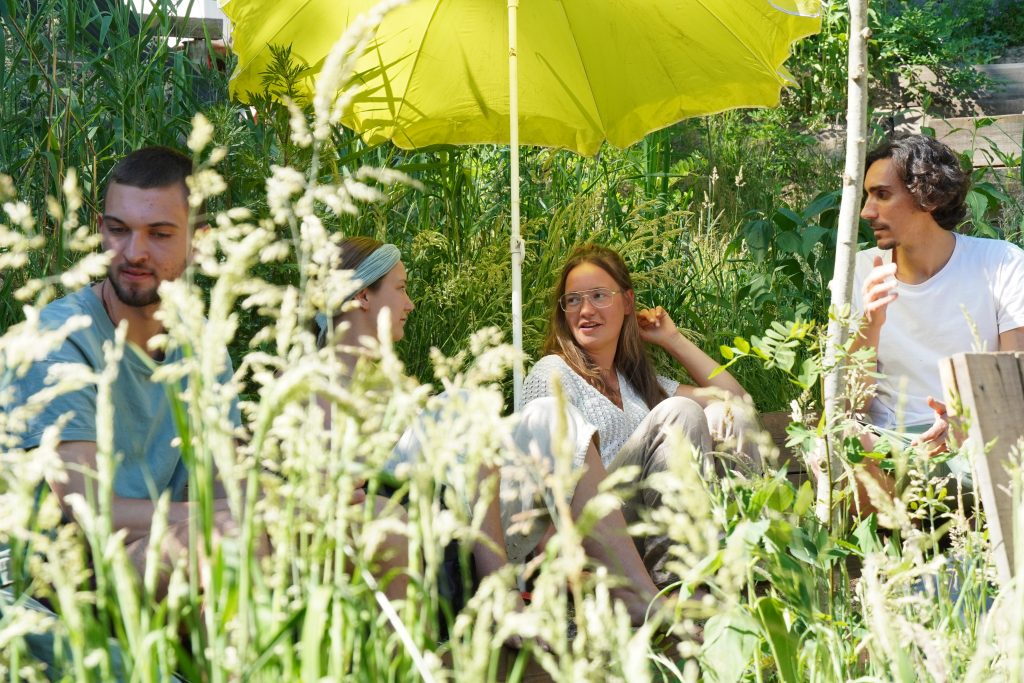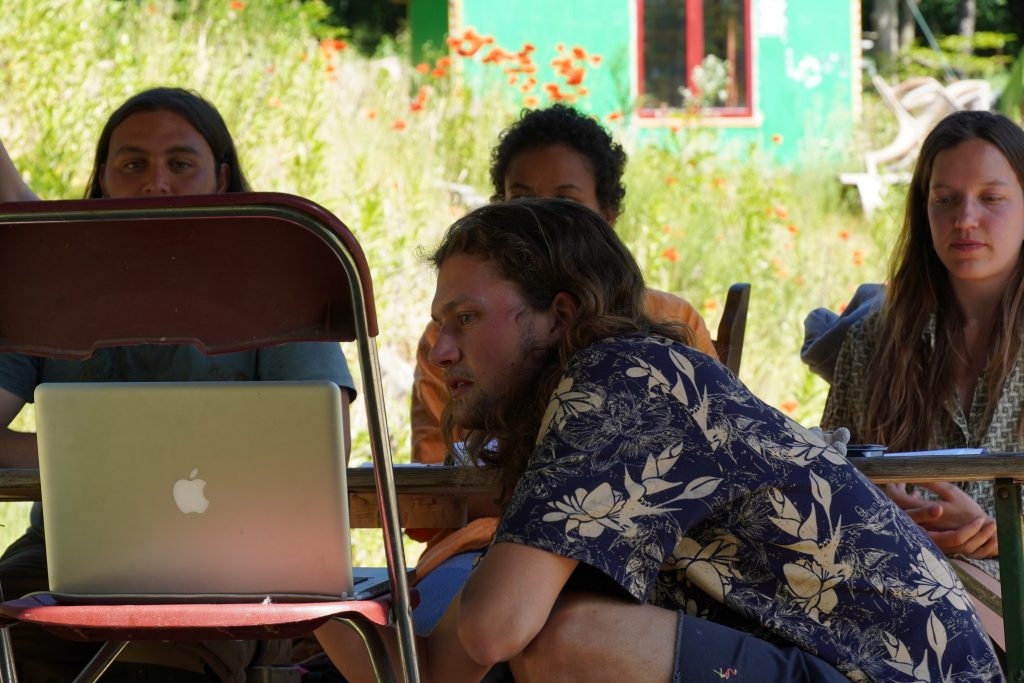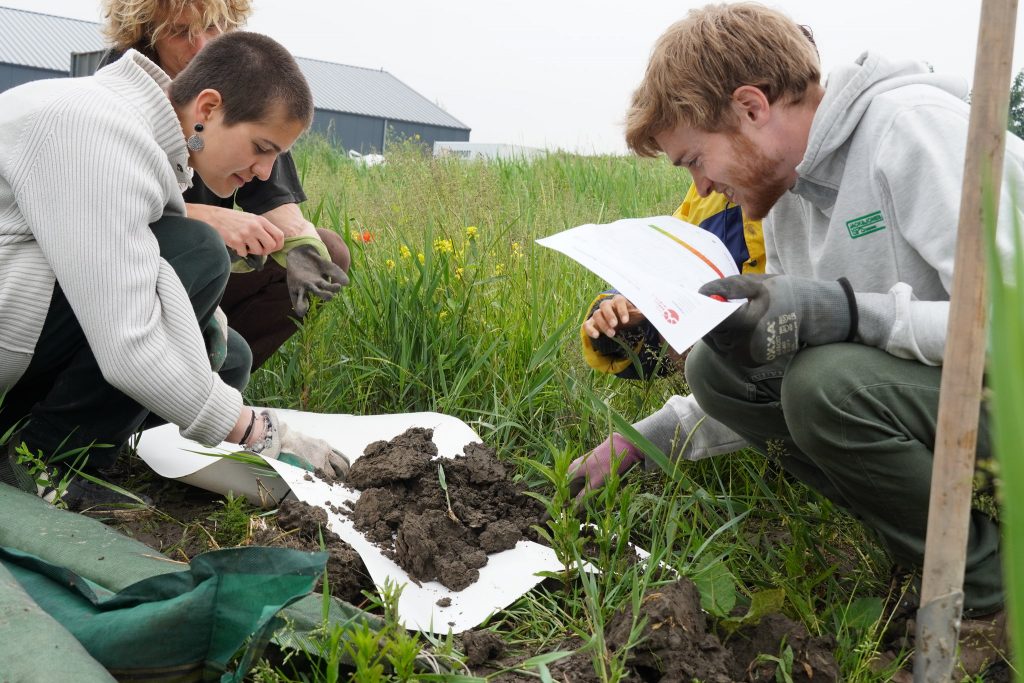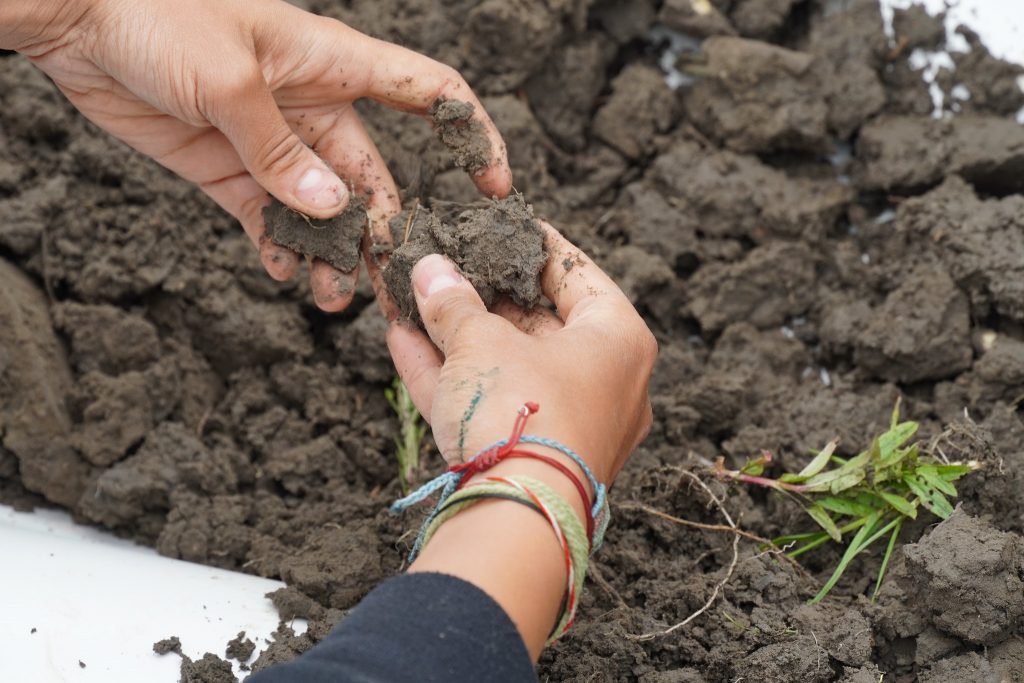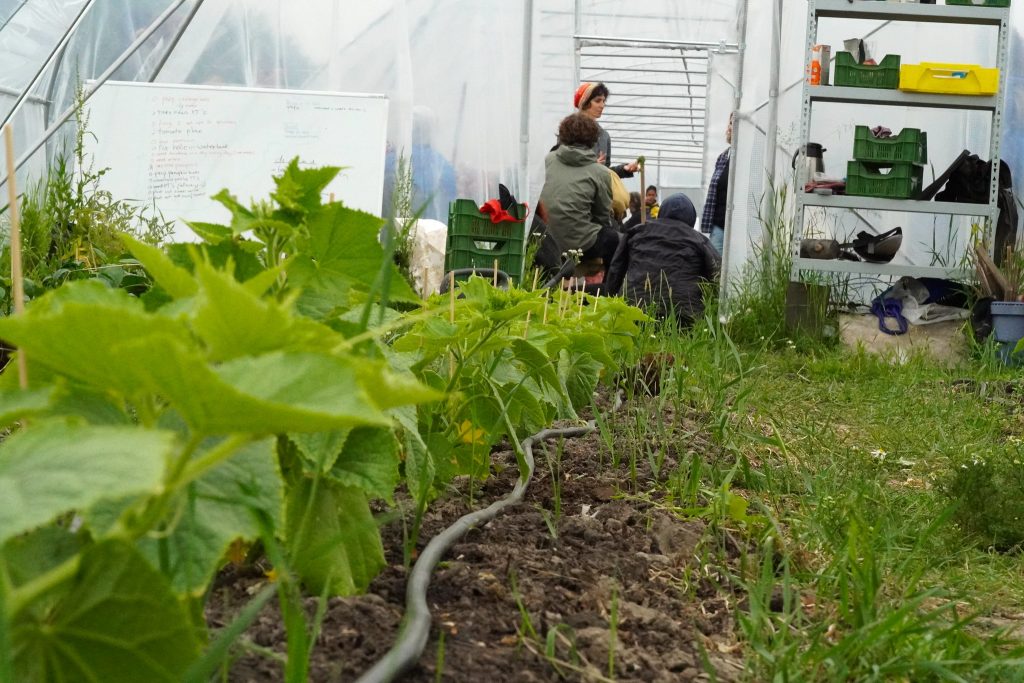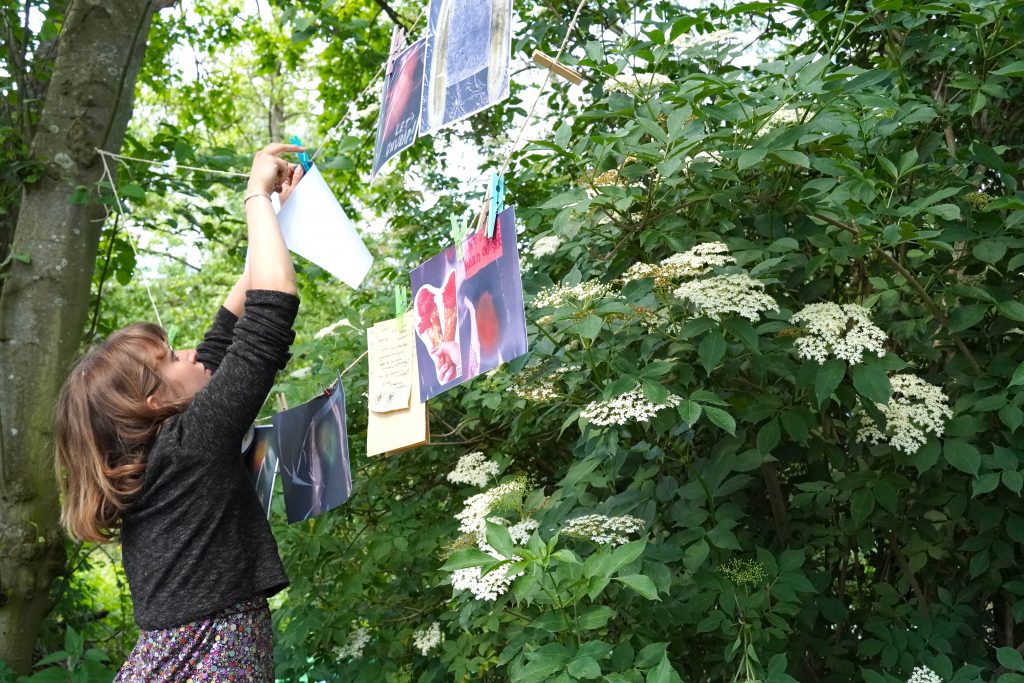The FAF #5 has happened throughout two weekends in June 2021. It started with a first part in Amsterdam during the first weekend of June (4th-6th June). The second session was in Utrecht during the following weekend (11th & 12th June) and then followed by Wageningen (13th & 14th June). The Festival activities were partly online and partly offline.
Reviews of the three cities form the FAF #5:
Amsterdam – Replanting the Lutkemeer polder –
Utrecht – Days full of highlights –
Wageningen – Blossoms around the city –
That year we focused on:
Decolonizing food systems
This year we will focus on decolonization of oppressive food systems, by talking about practices like land-grabbing, monocultures, GMOs, commodification of food, industrial agriculture, animal farming and modern slavery as well as the revolutions and resistance that has been led by the Native, indigenous people, people of color, and women, to regenerate our relationship with food and ecosystems.
Regenerative agriculture through practices
We will get our hands dirty in the practical workshops to learn about regenerative agriculture and educate ourselves about urban-rural farming connections, soil regeneration, agricultural justice, and any other farming practices aiming for dismantling the industrial agricultural system.
Roots and fruits of resistance
We will also have a look in the ways of raising voices and taking actions that have been used in the past and we will dream about what would be possible in the future to resist, build and care for our communities.
It was partially made possible by ALERT.
Here you can find summaries and impressions from some of the workshops that were given at the 2021 Food Autonomy Festival. You can find the whole programme here:
Programme for Amsterdam
Programme for Utrecht
Programme for Wageningen
Roots and Fruits of Resistance
Walk and Plant in the Polder – Amsterdam
The Lutkemeerpolder is the last fertile agricultural land in Amsterdam. In this little tour we shared a lot of information about these beautiful and threatened 43 hectares of mud, clay, water, flowers, grass and since this weekend – pumpkins!
The area is owned by GEM and managed by SADC – Schiphol Area Development company. Now Ahold Delhaize, a dutch multinational has made a reservation to buy the land and build a distribution center for food! Among other brands, they own Albert Heijn, Gall and Gall, Etos and Bol.com. If you ever wondered, what greenwashing looks like, just head to their website! They have a full section on how they care about local communities, short food chains and sustainability in general, but constructing a whole new terrain on scarce fertile agricultural land is as far as you can get from all of these ideals really. Already the land has been disturbed in the preparations for this project. The fertile hummus has been moved to the sides of the polder and the underlaying clay has been compacted. But nature is prevailing there regardless!
To prove to them and the Amsterdam Municipality how invaluable this land really is, we planted more than 200 pumpkin seedlings on the polder throughout the weekend. May they watch over the land while we cannot.
Resistance against these destructive plans has been going on for years now! Behoud Lutkemeer has organized many demonstrations, talks with the municipality, planting actions and more. They have also created a wonderful alternative plan: The Biopolder. This plan takes all of the important things into consideration, which a green area like this provides: Cultural and Educational aspects, providing a shortened food chain (less fossil fuels are used in transporting the food from the farm to the consumers), improving biodiversity and creating and protecting recreational space.
If you want to find out more about the struggle and the space, behoudlutkemeer.nl is a wonderful resource!
.
Food & Fossil Fuels – Human Map – Amsterdam
How are the fertilizer company YARA and the fossil gas industry intertwined? The production of synthetic Nitrogen Fertilizer requires large amounts of natural gas inputs and is thus a significant contributor to the climate crisis. In this workshop we (quite litterally with yarns of wool) intertwined and learned about the entanglement of YARA and a newly build liquified natural gas (LNG) terminal in Brunsbüttel, Germany that will provide YARA with fossil gas for their production processes. Naomi from the Gastivists and Sarah from ASEED took us on a journey starting at the LNG terminal in Brunsbüttel, Germany and the fertilizer company YARA based in Norway. We traced all of the actors, buyers, investors, and profiteurs in the bulding of this gas terminal and those involved with yara around the entire world. This truly showed how broad the network is that underlies the fetilizer and gas industry and how interwoven their interests are. With the human map we all positioned ourselves in different parts in the world and we learned how the multitude of actors all around the world also mean that as activists we have so many different points to tackle the issue and there are a lot of opportunities for global networks and solidarity. In the end we reflected on how crucial it is to connect the struggles against gas, climate justice and a different food system.
.
Land Occupation Workshop – Wageningen
Ppauw was set up 7 years ago by artists, squatters and trumpet players! It is a squatted terrain on area that used to be an abandoned hospital. It is an ecovillage, cultural space and home to 11 permanent residents. In this walk, we learnt how the space was set up, how it is maintained and how it is used now.
Decolonizing Oppressive Foodsystems
No Food on a Dead Planet – Utrecht
Living in Western Europe one might think that the industrial agriculture is the predominant food supply system in the world. But globally, only 30% of the food comes from the industrial food system, while the remaining 70% come from the peasant food web!In this workshop we learnt about how industrial agriculture is being spread globally, replacing more community centered and less environmentally taxing ways of growing food. The industrial food system pushes policies toward its favor on all levels. The most prominent recent example of this is the Common Agricultural Policy (CAP), which on a EU level subsidizes and supports large scale farmers and landowners (which is why the British Queen is a large recipient of CAP money, since the crown owns a lot of land). Beneficiaries of industrial agriculture also push for research and public-private partnerships, which use public money to finance projects that ultimately benefit only the big agricultural corporations. These big players also have other means of spreading and strengthening industrial agriculture: Lobbying, Revolving doors (people who previously worked in politics now consult corporations on how to get policies into effect) and Multi-stakeholderism. Multi-stakeholderism describes the phenomenon when corporations come together to have “everyone affected by a policy sit at the table”. This often doesn’t include the communities and farmers who are ultimately the most affected. However it does give corporations and policy-makers legitimacy and the look of taking everyone’s perspectives into consideration. The way the big agricultural players envision the future of agriculture features “nature based” solutions to problems of climate change and sustainability. In practice this often means taking farmland and turning it into forest, which stores more carbon. However, less agricultural land means that we need to produce more per acre – meaning higher intensity agriculture. It also assumes that there is only one type of agricultural land and one type of forest, both of which are untrue assumptions. Big AG also pushes for solutions with an extremely heavy use of inputs and technical knowledge/ licenses. This vision at its core is undemocratic, unsustainable and unjust. In the second part of the workshop, we discussed individual alternatives to this system and groups who are resisting these processes. Food sovereignty and agroecology (the kind of agriculture that supports food sovereignty) play a crucial role in building a more sustainable and culturally appropriate food system. Learn more in our last article on food sovereignty and more about the Transnational insitiute here.
.
Veganism in an Oppressive World – Utrecht
In this live reading group we discussed together two excerpts from the Book “Veganism in an Oppressive World- A Vegans of Color community project”. The aim of the reading roup session was to gain a more intersectional understanding of veganism and the animal rights movement and to listen to the voices of people of color in the movement. In one group we reflected on how veganism is approached from different cultural contexts which leads to varying experiences for each individual. We reflected on how “oppression olympics” often separate the veganism movement from other ovements rather than finding synergies with struggles for other forms of oppression. The text discussed by the other group…The session left us with many more questions to explore in the future and we reflected on how positionality is very important in this context. Who says what to whom matters. A white upperclass vegan might have less legitimacy to tell a working class person of color that turning vegan is good and possible for them compared to someone from their own community. Also within the animal rights movement single-issue activism should not be a thing and checking your privileges is crucial to create a just and inclusive movement.
.
History of African Rice – Wageningen
In this workshop Maimouna allowed us to discover the history of African Rice through the lense of story telling. When being forcefully taken away from their home country to be enslaved in the Carribean, many African women were hiding rice kernels in their hair to bring the rice and the nourishment it provides to wherever they were being taken. African Women were the gurdians and cultivators of this rice and this story shows how African Rice is a carrier and symbol for food autonomy, cultural values and resistance. Nowadays, the rice that is commonly found in supermarket shelves all over the world (including Africa) is Asian rice. It is often white and without a lot of nutrients – easy to process & polish, easy to commodify and fast to cook. African rice on the other hand needs special attention as it is more difficult to process and is embedded in cultural practices. The history of how African rice has disappeared (or rather, has been made to dissappear) is thus also a history of colonization, industrialization and commodification. And that makes telling, sharing and reflecting on the (her)story of African Rice and remembering its rich history and meaning ever more important.
Regenerative Agriculture
CSA approach: Pluk and Stadsgroenteboeren Comparison – Amsterdam
In this farmtour two Amsterdam West CSAs, PLUK! and Stadsgroenteboeren, took us to their newly cultivated fields at the Lutkemeerpolder. They showed us their different approaches to farming and the CSA model and also shared with us their different struggles and ideas. Stadsgroenteboeren have many members and also deliver to restaurants and are not self-harvested. This allows them to do a lot of companion planting and have smaller walking paths as it is mostly the farmers themselves who are harvesting and walking through the fields. For PLUK this is different, as the are a self-harvested CSA. This means that every week the people who bought a share come to harvest their own vegetables so there needs to be a lot of space to walk and harvest between the beds for all the people coming. And panting to many different things (companion planting) in one area could be confusing for people so that they end up harvesting the wrong crop. Another difference is the soil . PLUK! uses surface level tilling to prepare the beds for the next crop/season and weed every bed manually (with the help of volunteers!). Stadsgroenteboeren, on the other hand, practice no dig farming and put a thick layer of compost on their garden beds to prepare them for the next crop. This allows for the soil structure not to be disturbed but buying compost is expensive and the quality of the compost varies greatly whoch effects the growing successes. These are only a few of the differences of the two CSAs, each with their own reasoning. As we can see, these two neighboring CSAs have quite different approaches, each fruitful in their own way and they are supporting and collaborating wherever possible. If you want to find out more about each CSA and see them with your own eyes you can check out their websites https://www.stadsgroenteboer.nl/ and http://plukcsa.nl/en/ for more information.
Water management – Amsterdam
In this online workshop, we learnt about different strategies to prepare for drought and water shortage in your garden or farm. It’s best to start preparing, when it’s not dry yet! If you can, store some water prior to the drought – let gravity work in your favor. When water hits the ground, keep in mind the 4 S: Slow, Sink, Spread and Shade the water. One way to do this is by using swales – small trenches below flood level and elevations next to them in the garden with high trees or bushes shading the area. In the household, 3 Rs are important for water management: Reduce/Refuse, Re-use and Recycle.
ArtLab – Sensorial Food Experience and Scanography Workshop – Utrecht
We started the workshop with a sensorial experience, which meant that we tried to raise some awareness on the senses we use when we pick our food from the supermarket and to question how much autonomy we have in a supermarket setting. Every participant picked from a basket full of dumpster dived vegetables and fruits. Food that was devalued by the food industry. We asked participants to give their chosen vegetable or fruit a new value and explain this through their senses and create an associative personal story. The next part of the workshop was a symbolic act. We took the next step and in our imagination we moved to the scanner’s in the supermarket, where labels are printed according to the values (weight, price, shape) the supermarket has preshaped for us. We asked the participants to think of a way how their personal sensorial experience and story could be told in a visual way. We provided a scanner, lot’s of package materials and an environment to experiment and play. The scanographs were printed as a visual statement in a poster format and on stickers. So everyone can now spread their personal message. We will also organise a time when we hang up all the posters together at a chosen supermarket. Some sensations people shared: “I have never touched a mango’s skin so long with closed eyes. I really think I should do this more often. Now I don’t even want to cut it’s skin, because it feels so close to me.” “I never thought of a cucumber as a living thing, mostly I’m focused on the growing part, after it becomes more of an object. But now I feel this cucumber has a lot of juice, water and life inside.”
